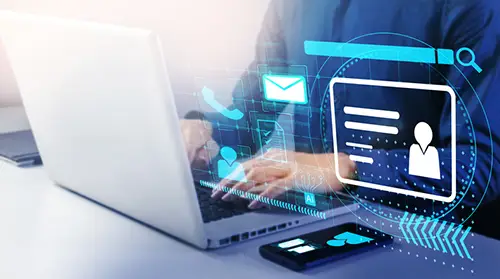How Does a Service Desk Ticketing Work?
What happens when an employee is having a technical issue? They approach their immediate supervisor for help. What happens next is that the supervisor creates a ticket and sends it to the IT department. A service desk ticketing system handles and manages these tickets.
Each ticket contains the details of the issue that is bothering the user or employee. A service desk ticketing system helps by providing a way to report such issues. An employee may visit a certain website and submit an online form about their concern. After that, they click on a submit button and that will create a ticket.

Knowing the basics helps you understand the nature of a problem. This applies to various fields of interests, even in computing. A service desk is the single point of contact between the user and IT for daily activities. A ticketing system supports users with their issues or incidents that they encounter. It assists your employees, starting from the incident report and ending in its resolution. A service desk ticketing system tracks and assigns tickets to the right people.
There are many software vendors out there. Be careful in choosing one because this affects your entire business. It is advisable to look for a provider that offers a service desk ticketing system and the following:
- Cloud-Based Ticket Management System.
- Remote Monitoring and Management (RMM).
- Patch Management.
- Mobile/Endpoint Security Management.
You will learn in detail how a service desk ticketing works and its benefits.
Service Desk Ticketing System — How Does It Work?
A ticket undergoes various lifecycle stages. A service desk ticketing, like what ITarian offers, is commendable. But how does it work? Here are the various ticket lifecycle stages:
| Stages | Description |
|---|---|
1. Identify and capture issues. |
ITarian’s service desk ticketing helps in identifying ticket sources. It captures issues coming from the following:
|
2. Record issues and track progress. |
It is necessary to record and track issues after detecting them. ITarian’s service desk ticketing system can record issues and track them with ease. |
3. Manage the ticket. |
ITarian’s service desk ticketing system manages tickets in a very effective way. It first looks for a similar concern within its knowledge base. If there’s a match, then the resolution for that issue applies. If there’s no match, then an expert handles the ticket. |
4. Resolve the ticket. |
This is where the user’s concern and its resolution undergoes a documentation process. It should include every step, from identifying the issue up to the resolution. Closure of the current ticket follows. After that, the service desk ticketing system handles the next ticket in the queue. |
The Benefits of Service Desk Ticketing System
Service desk enforces efficient workflows for both internal and customer support departments. Service desk software allows administrators and staff members to do various activities, such as responding to tickets, generating reports, and creating knowledge base articles.
Here are the benefits of using ITarian’s service desk ticketing system:
| Advantages | Description |
|---|---|
Accessible Anytime and Anywhere. |
Pick a service desk ticketing system that has support for cloud computing technology. ITarian gathers tickets from various sources, like web portals, emails, and endpoints. |
Effective Communication. |
Service desk ticketing system must guarantee that clients get the data they need. This also comes with the following:
|
Efficient Workflows. |
Your service desk ticketing system should be efficient in managing tickets. ITarian automates ticket routing and SLA tracking. It can also handle and manage escalations. |
Reporting and Visibility. |
One feature or benefit to look for in any product or service is its ease of use. ITarian has an easy-to-use graphical user interface (GUI). It comes with tracking and reporting functionalities as well. |
Shared Knowledge. |
It is critical to document solutions or recommendations in a single place. This reduces the chances of repeating incidents. Your service desk ticketing system must document issues and provide possible solutions. ITarian does a good job at this. |
Cost Reduction. |
ITarian can aid you in saving money, time, and effort. The reason behind this is because ITarian is a cloud service provider. They will handle and manage your network and other IT services for you. This covers both hardware and software elements. |
Now you know what a service desk ticketing system is, how it works, and its benefits. Great things are possible using ITarian’s service desk software. They offer many features and benefits for free. Sign up now and enjoy their products and services!
